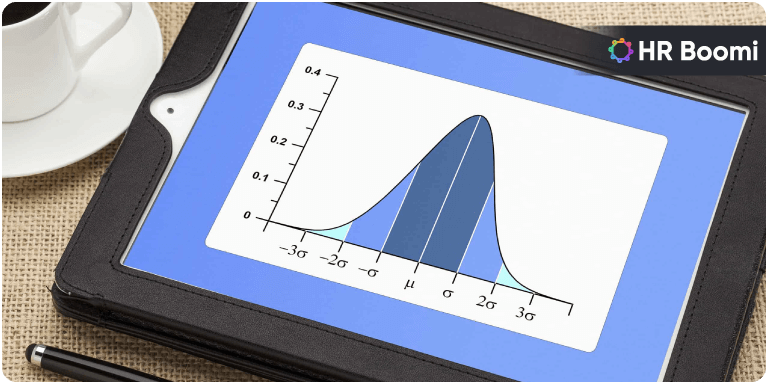
Table of Contents
In an era of big data, agencies continuously grapple with an overwhelming quantity of data. They need to sift through this information to make informed decisions, extracting precious insights that is crucial for success. One invaluable tool in this method is the bell curve analysis, a statistical technique that helps transform raw data into actionable insights.
This technique enables organizations to perceive characteristics, styles, and deviations in their data, making more informed decisions, optimizing methods, and allocating resources effectively. In this informative guide, we can delve into the significance of bell-curve analysis and its relevance in data-driven decision-making and provide a step-by-step exploration of proper implementation. Through this, we aim to unlock the hidden potential of bell-curve analysis, turning statistics into insights that drive progress.
Statistics
In step with a survey performed through the McKinsey Worldwide Institute, 59% of agencies utilize data-driven insights for decision-making, resulting in a 5% increase in productivity. Reference Link. Join us in this adventure as we discover the transformative potential of bell-curve analysis, assisting you in harnessing the power of your data.
Understanding the Bell Curve Analysis
Before we delve into the intricacies of bell-curve analysis, let’s begin with the fundamentals. The bell curve, additionally known as the ordinary distribution, is a critical thought in satistics. It is defined by a symmetric, bell-curve representing the distribution of data points around the mean(average). In an ideal bell curve, maximum data points cluster around the mean, with fewer data points as you move far from the implication in either path.
Why Is the Bell Curve Important?
The bell curve’s significance lies in its widespread presence across natural phenomena and man-made systems. This characteristic empowers it to provide profound insights into the distribution of information, permitting us to figure out patterns and make informed predictions.
Whether we’re studying the distribution of academic test scores, the quality control of manufactured goods in a business context, or even the tracking of health trends in populations, the bell curve provides a common framework to analysing and understanding data distribution. It serves as a fundamental tool for figuring out the norm, outliers, and the relative frequency of data points, in the long run enhancing our capability to extract meaningful information from diverse datasets.
Here’s why it subjects:
Data Distribution
The bell curve provides information about how data is distributed. The bell curve shows us the standard distribution pattern, whether it is examination scores, product defects, or employee performance.
Identifying Anomalies
It permits us to discover outliers or irregularities. Data points diverging from the mean can indicate remarkable activities or issues that require attention.
Resource Allocation
Understanding the bell curve helps in resource allocation. You can allocate sources where they are most required based on the information distribution.
Quality Control
In production and high-quality management, the bell curve allows tolerances and ensures product consistency.
Risk Assessment
Risk evaluation regularly relies on the bell curve. It facilitates verification of the risk of different outcomes.
Practical Applications of Bell-Curve Analysis
Now that we have understood the significance of the bell curve, let’s discover its realistic applications:
Performance Evaluation
Many agencies use bell-curve analysis for workers’ overall performance evaluations. It identifies high performers, average performers, and those who may also need improvement.
Quality Control
Bell-curve analysis maintains exceptional standards in manufacturing and service industries. It helps in detection of defects and maintain consistency.
Financial Markets
Investors and traders often examine stock prices by the usage of the bell curve to understand price distribution and to anticipate future trends.
Educational Assessment
Educational assessments are frequently graded using bell-curve concepts to set the difficulty level and decide grade boundaries.
Healthcare
In medical research, the bell curve can help analyze the distribution of health indicators in populations and predict ailment prevalence.
How to Conduct Bell-Curve Analysis Effectively
Here’s a step-by-step manual on how to perform bell-curve analysis efficaciously:
Step 1: Collect Data
- Begin with collecting the data you want to analyze. Ensure it is accurate, applicable, and represents your study phenomenon.
Step 2: Calculate the Mean and Standard Deviation
- Find the mean (average value) of the records.
- Calculate the standard deviation, which measures the extent of records. A higher standard deviation indicates more variability.
Step 3: Create a Histogram
- Create a histogram to visualize the information distribution. The x-axis represents statistics values, and the y-axis shows the frequency of those values.
Step 4: Fit the Curve
- Overlay a bell curve over the histogram. The curve must be centered at the mean and feature a standard deviation that fits the facts.
Step 5: Interpret the Results
- Analyze the shape of the curve. Your statistics tends to follow a standard bell curve if they intently fit an ordinary bell curve.
- Discover outliers and understand their significance.
Step 6: Make Informed Decisions
- Use the insights derived from the bell-curve analysis to make informed decisions. Allocate resources, set performance expectations, or modify strategies based on the records’s distribution.
Real-Life Example: Employee Performance
Allow us to reflect on the consideration of a real-life example. Imagine you’re an HR supervisor in a medium-sized agency and need to evaluate worker performance. You discover that most personnel fall inside the common variety by engaging in a bell-curve analysis of employee productivity. You may perceive a small group of high-performing individuals and some who need improvement.
With this perception, you may allocate resources correctly. You may reward high-performing employees, provide extra training for employees who need improvement and set achievable expectancies for the common performers. This data-driven method guarantees that your HR selections are honest, informed, and aligned with the employer’s dreams.
Conclusion:
Bell-curve evaluation is a powerful tool that can transform raw data into actionable insights. By understanding the distribution of data, one could become aware of patterns, anomalies, and trends that important for informed decision making. Whether in HR, finance, production, or another subject, this method has practical utility that enhances operations and success achievement.
Recent Posts
-

In-house vs. Outsourced Payroll: Pros and Cons
-

Mastering Talent Retention: A Corporate Challenge
-

What is employer branding and how to apply it in your company?
-

The Significance of Employee Communication Within
-

What is time management and why is it important?
-

Net salary: what is it and how is it calculated?
-

Enhancing Employee Experience: Strategies for Excellence
-

10 Best Gifts to Boost Sales Channels
